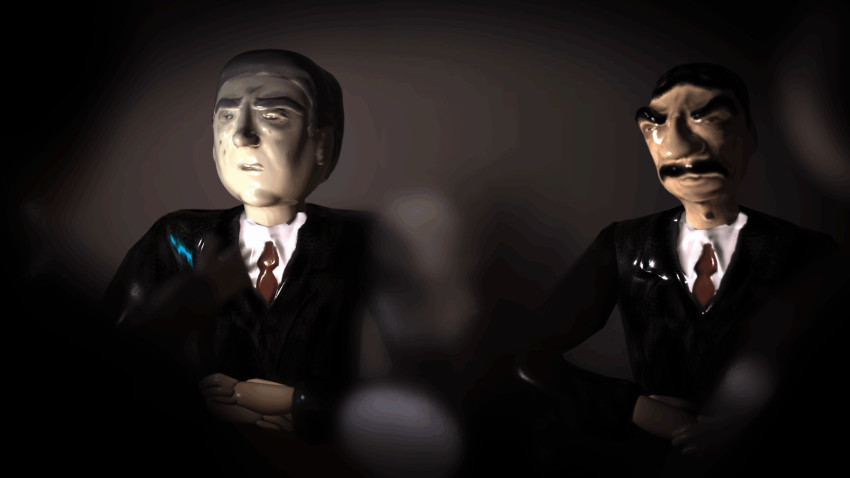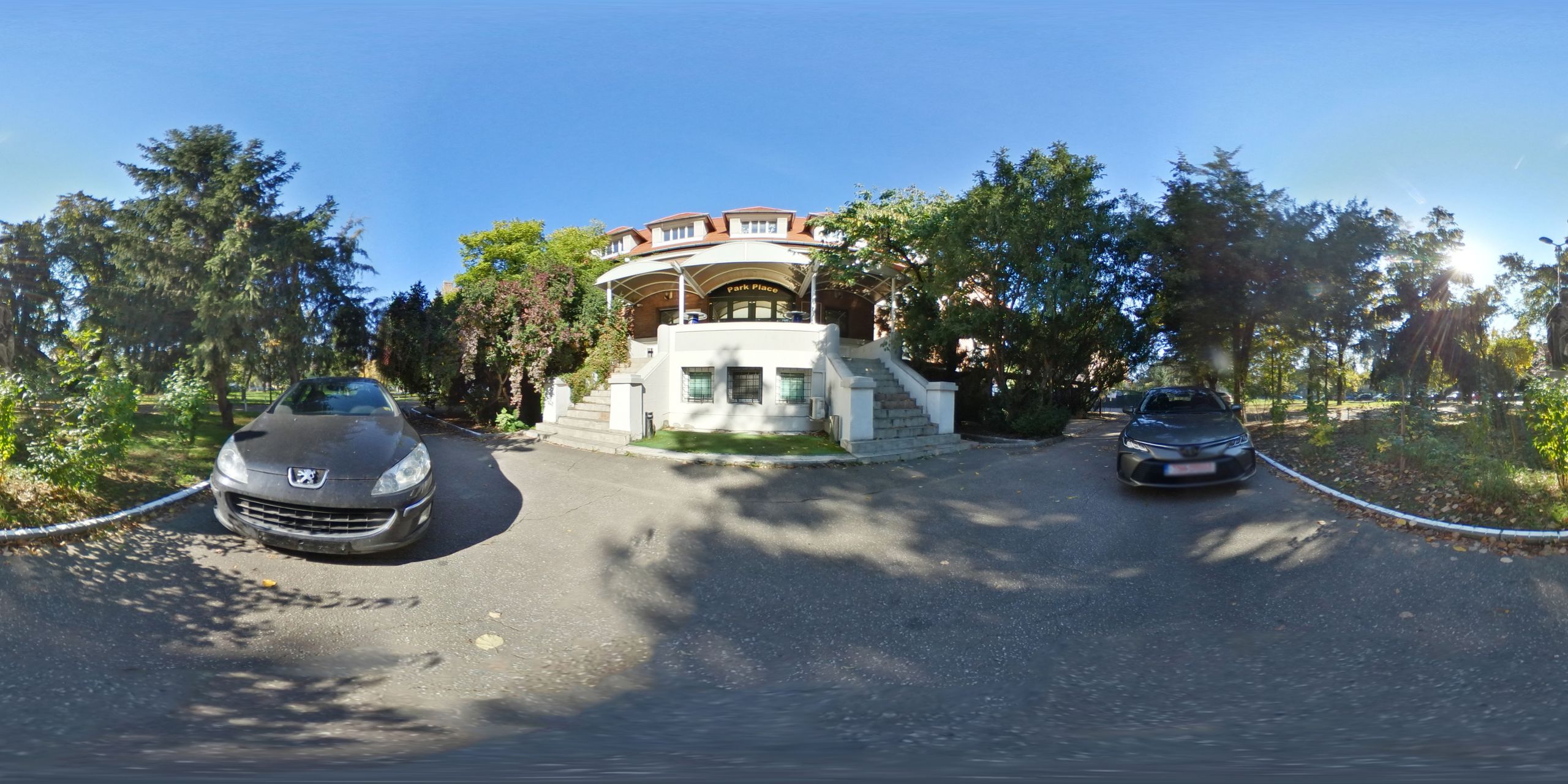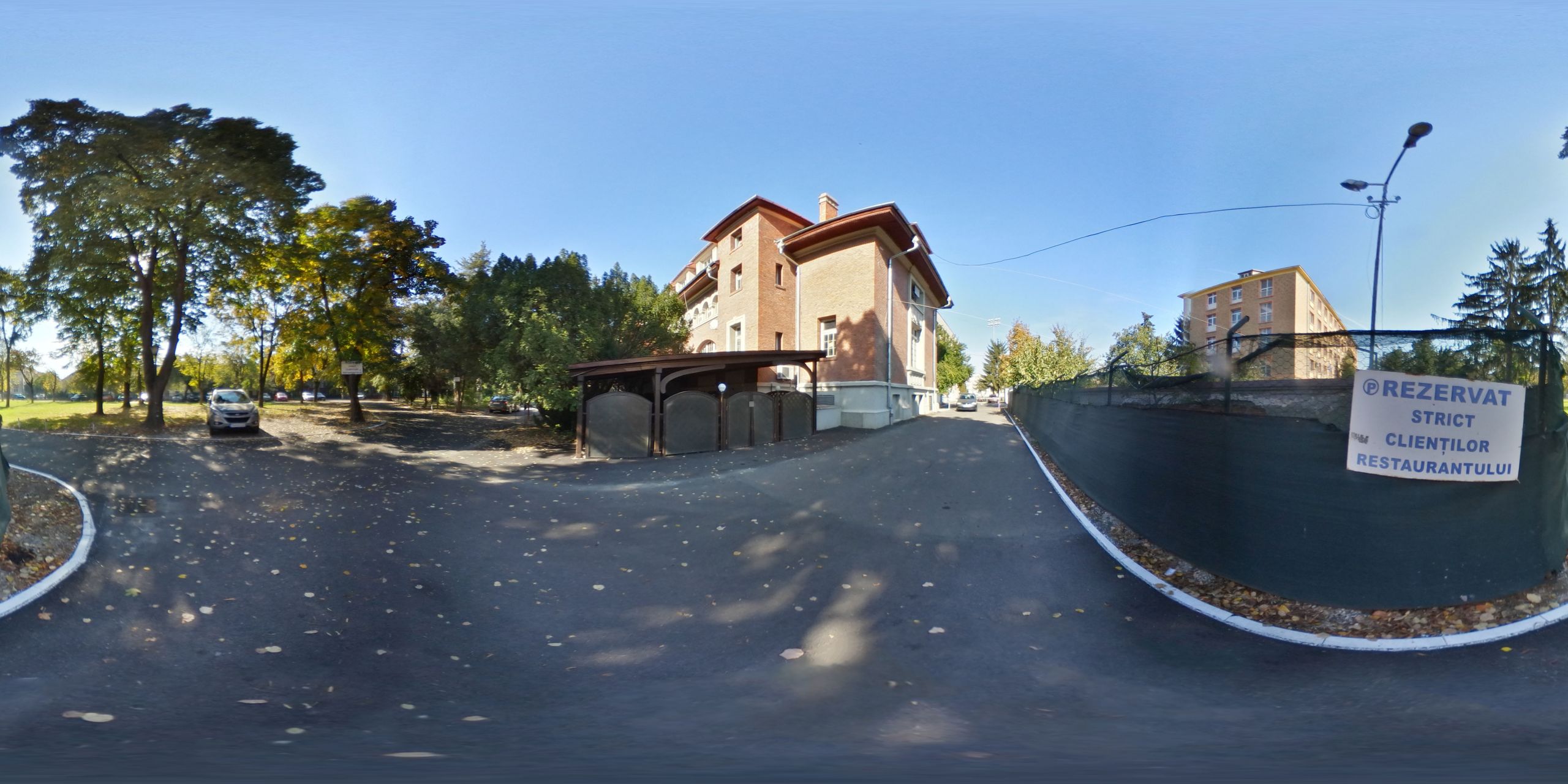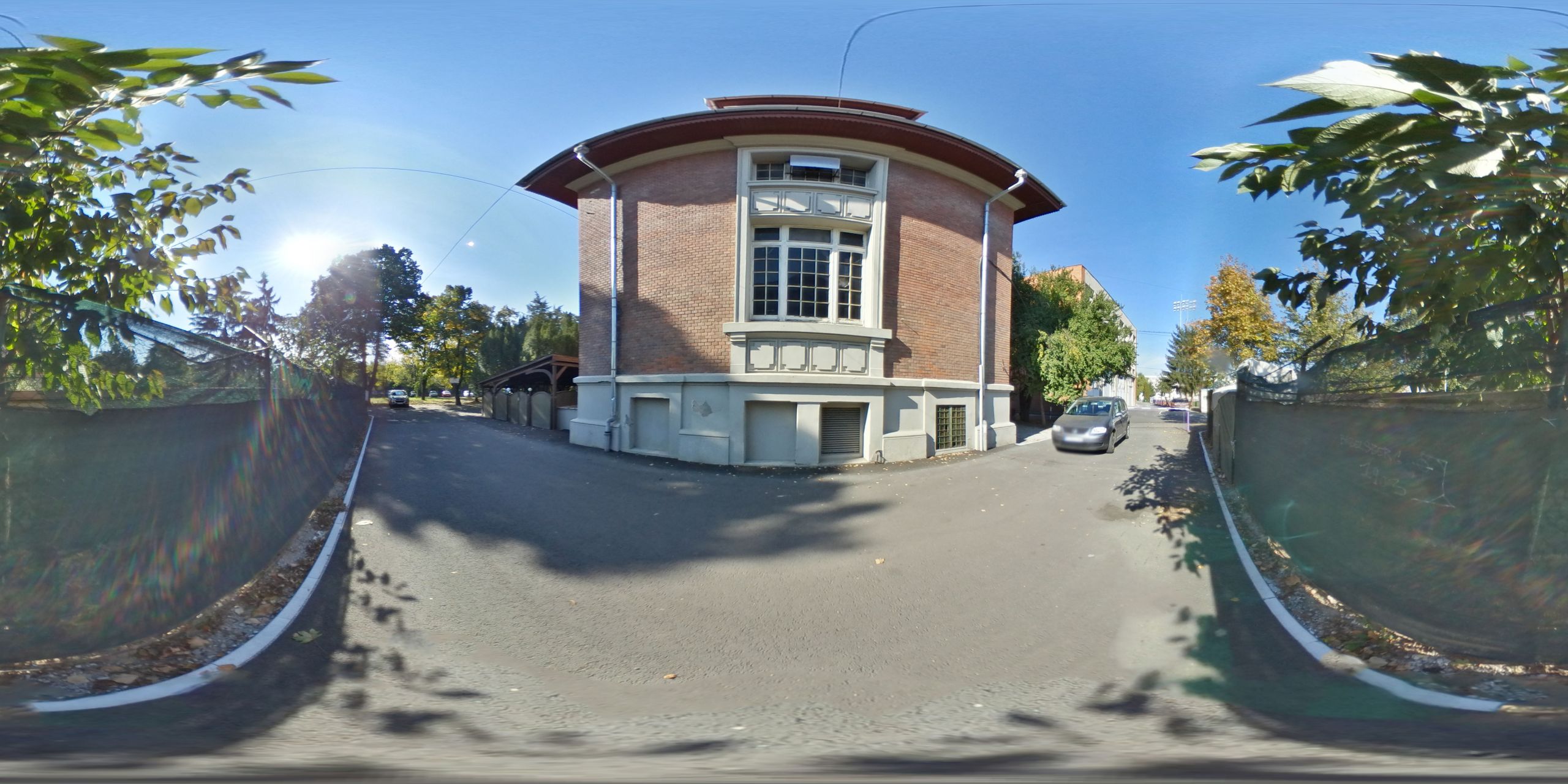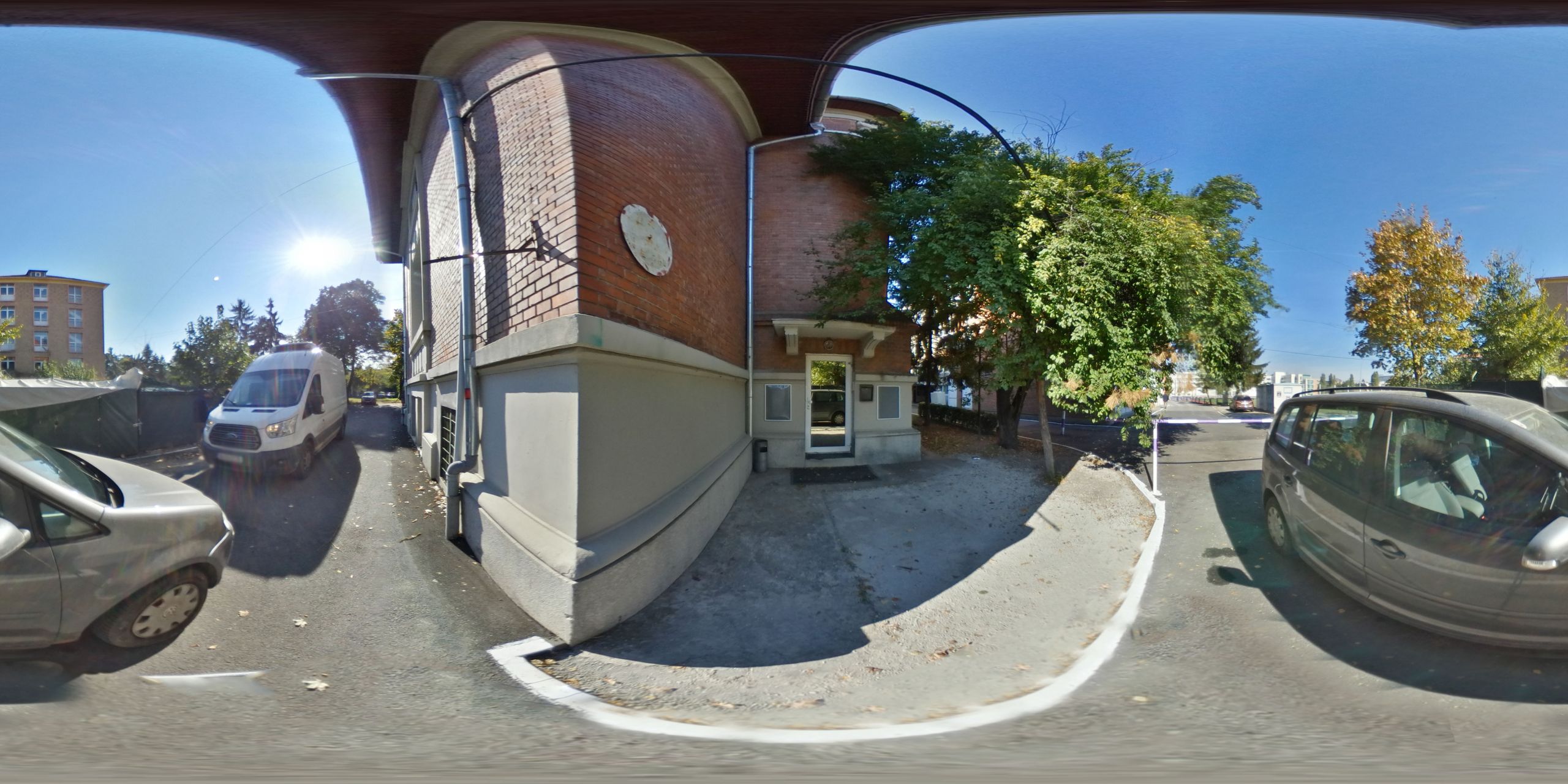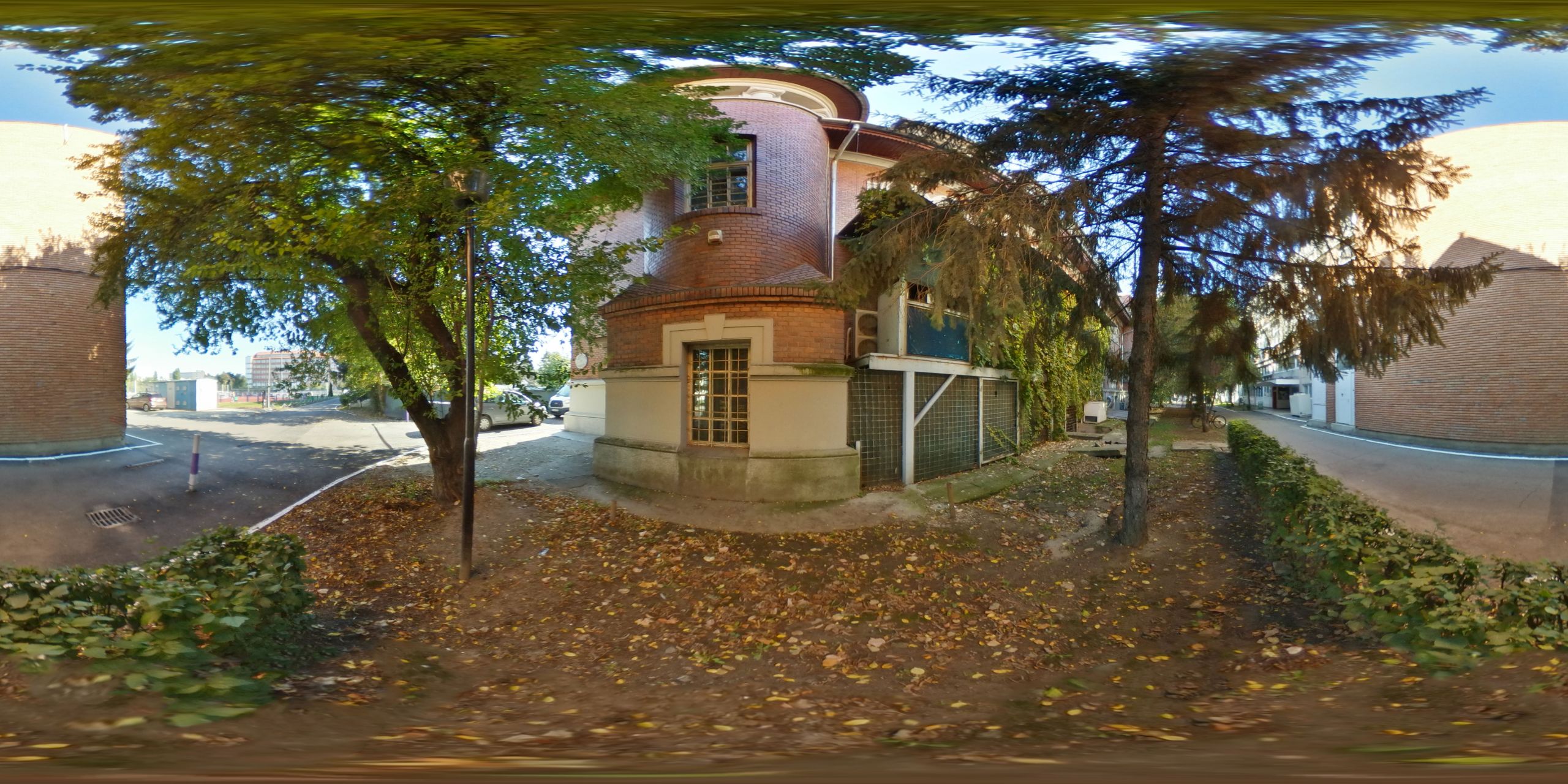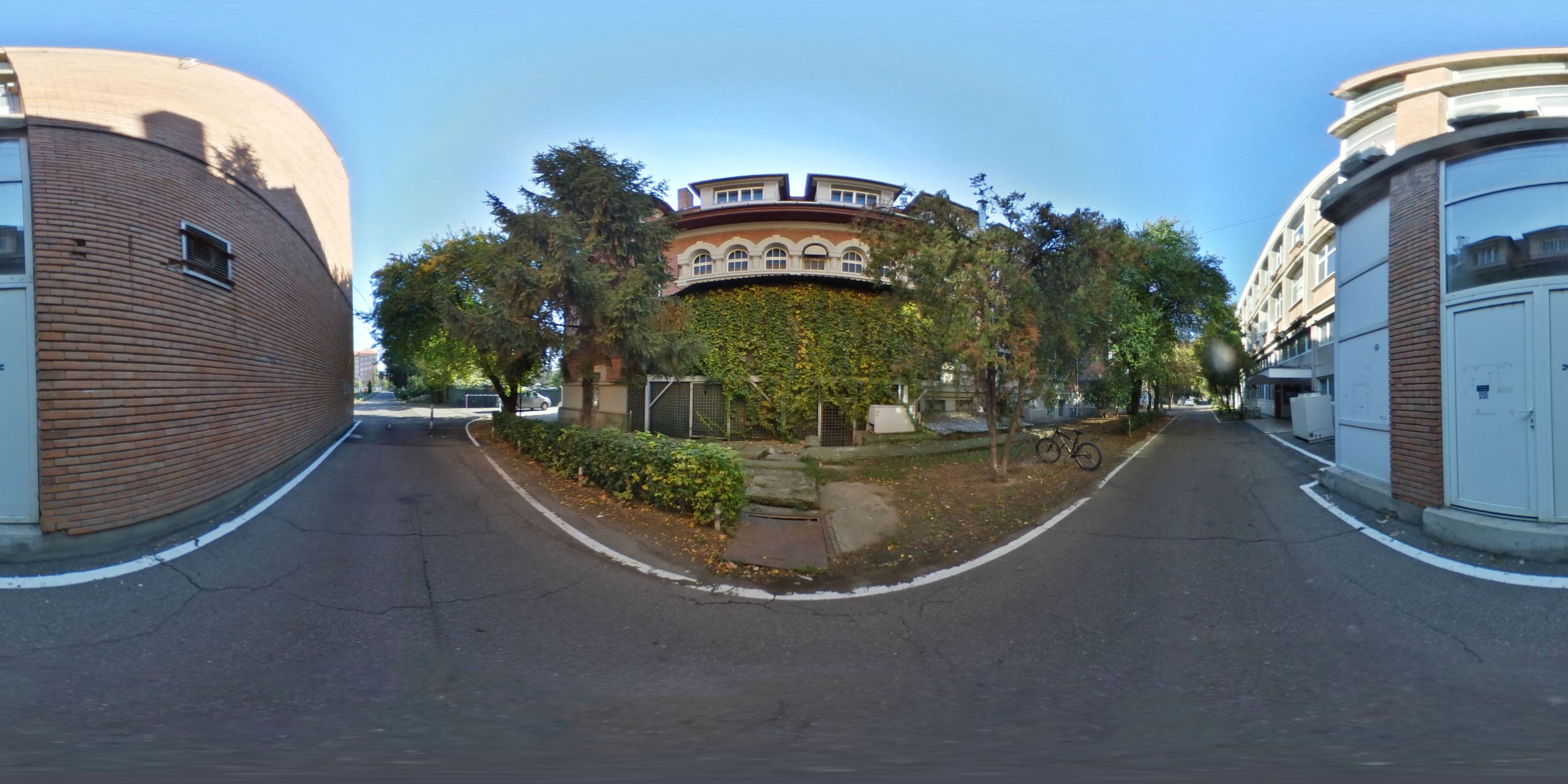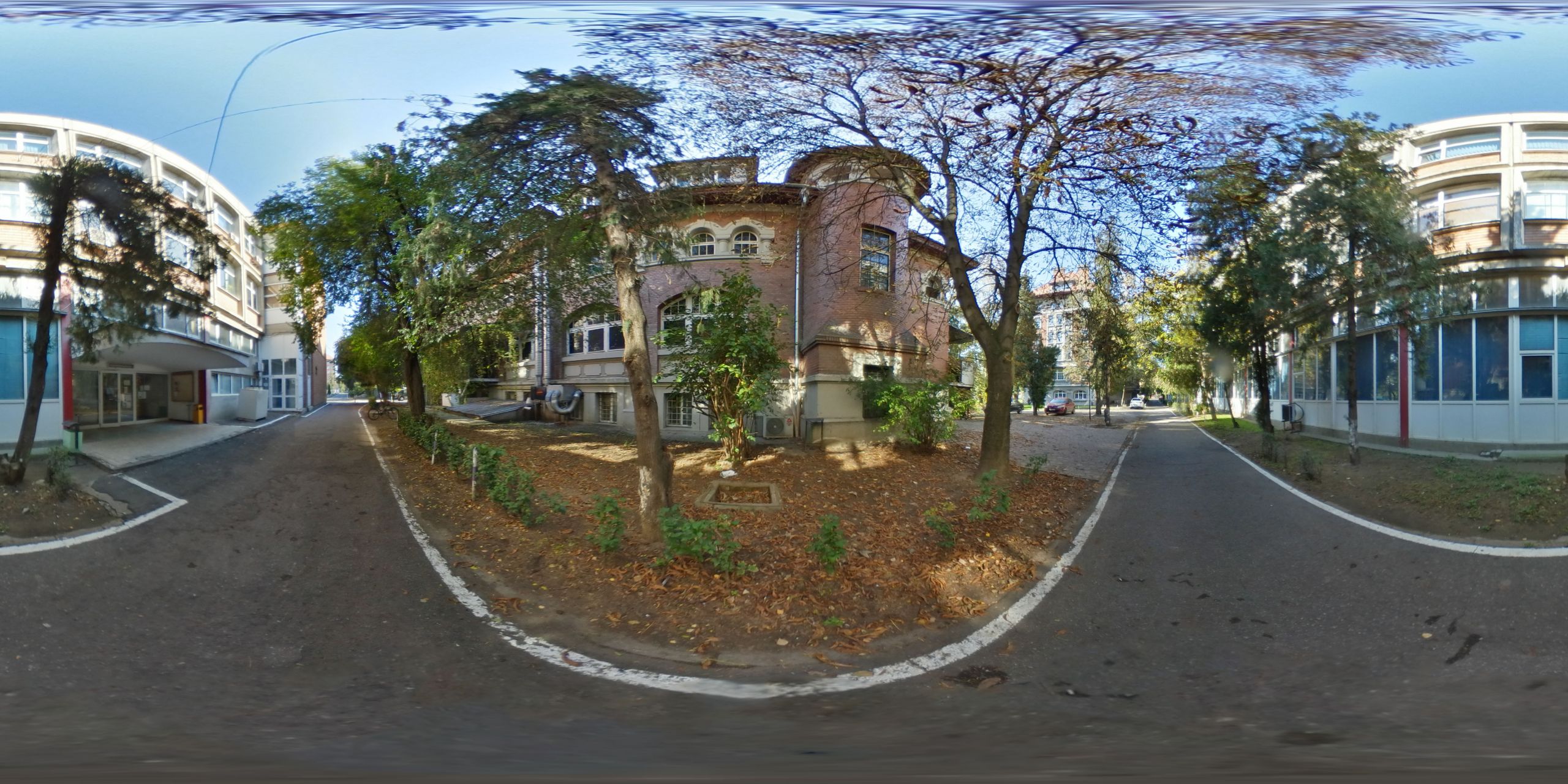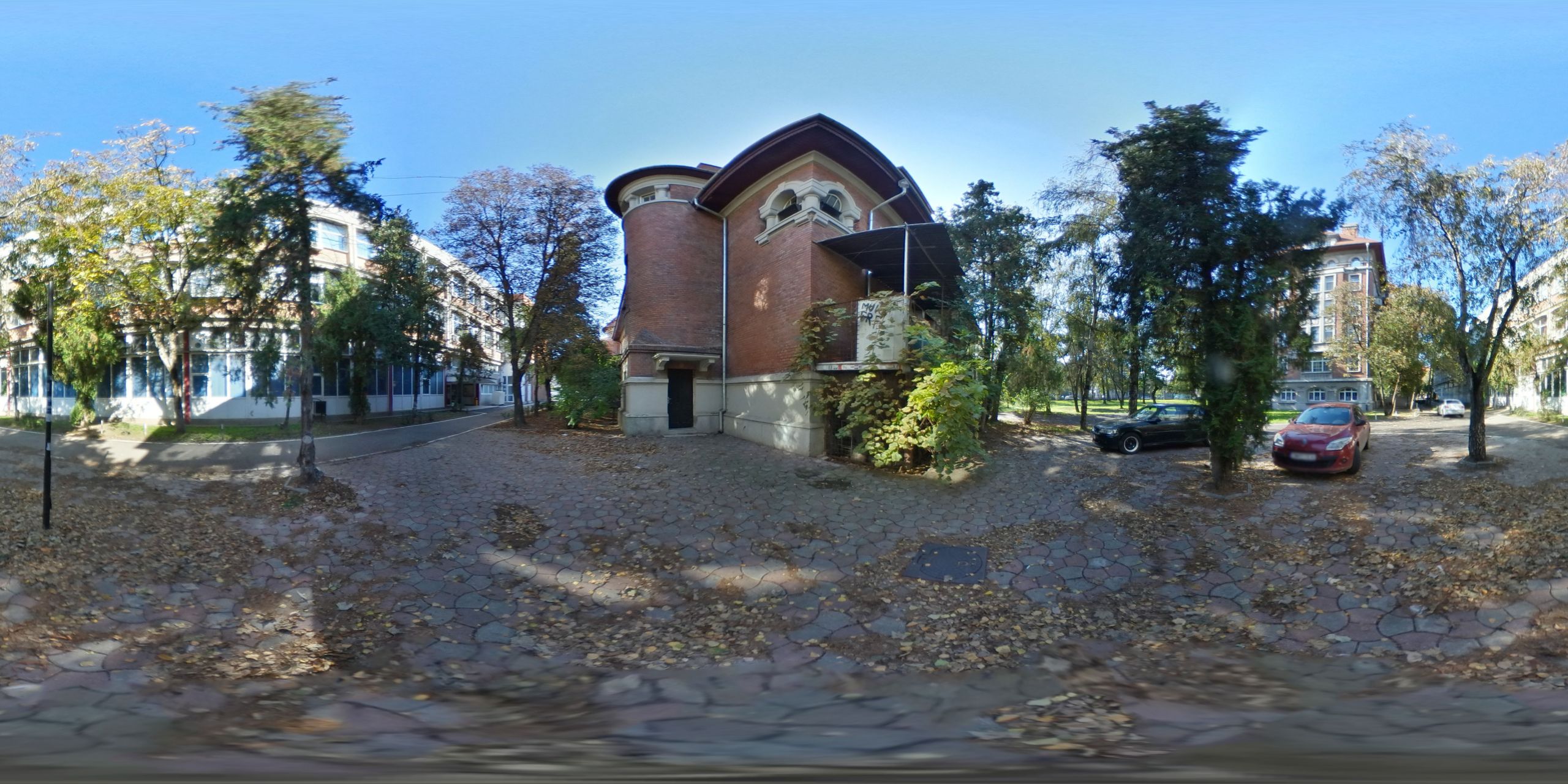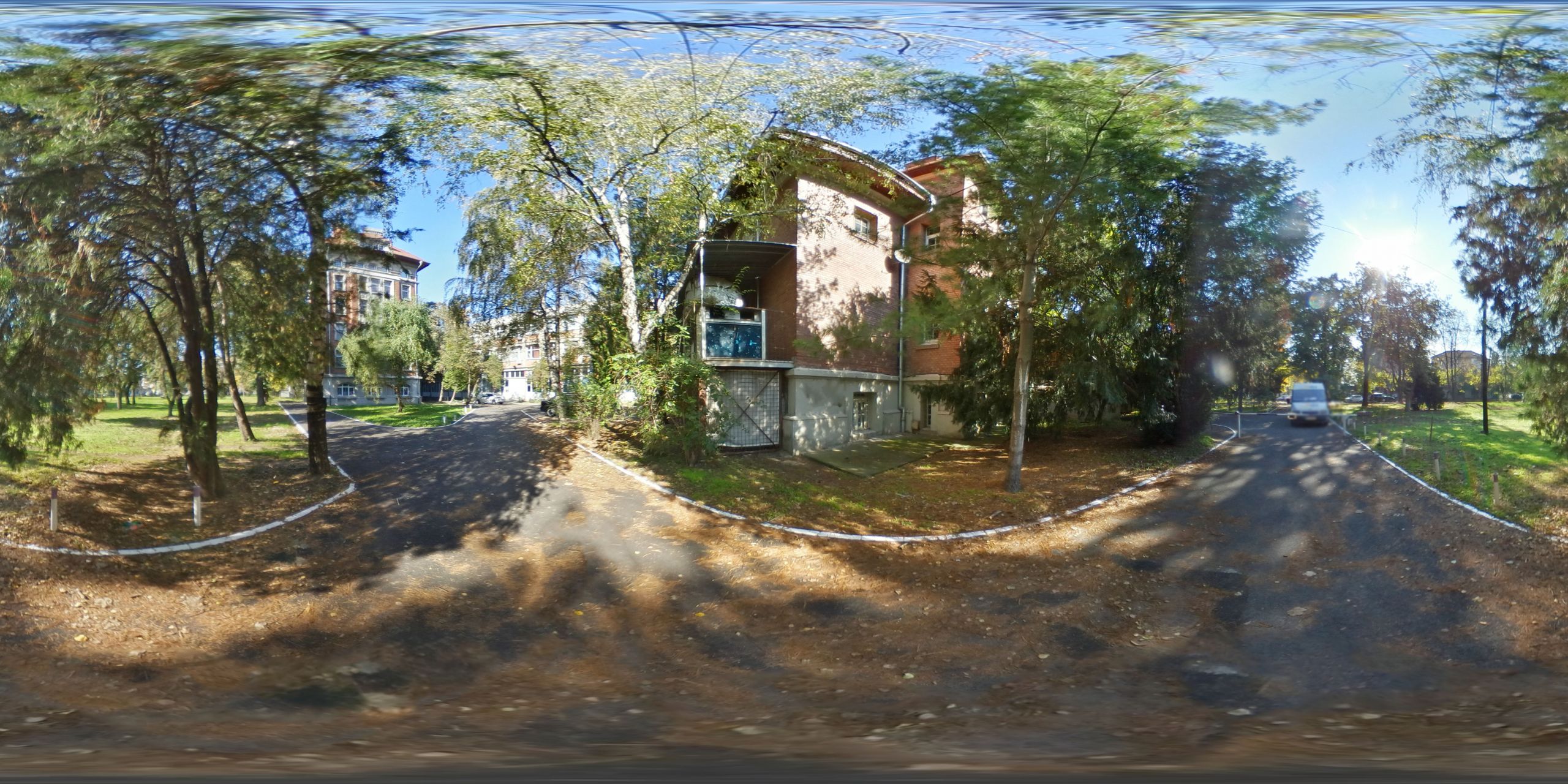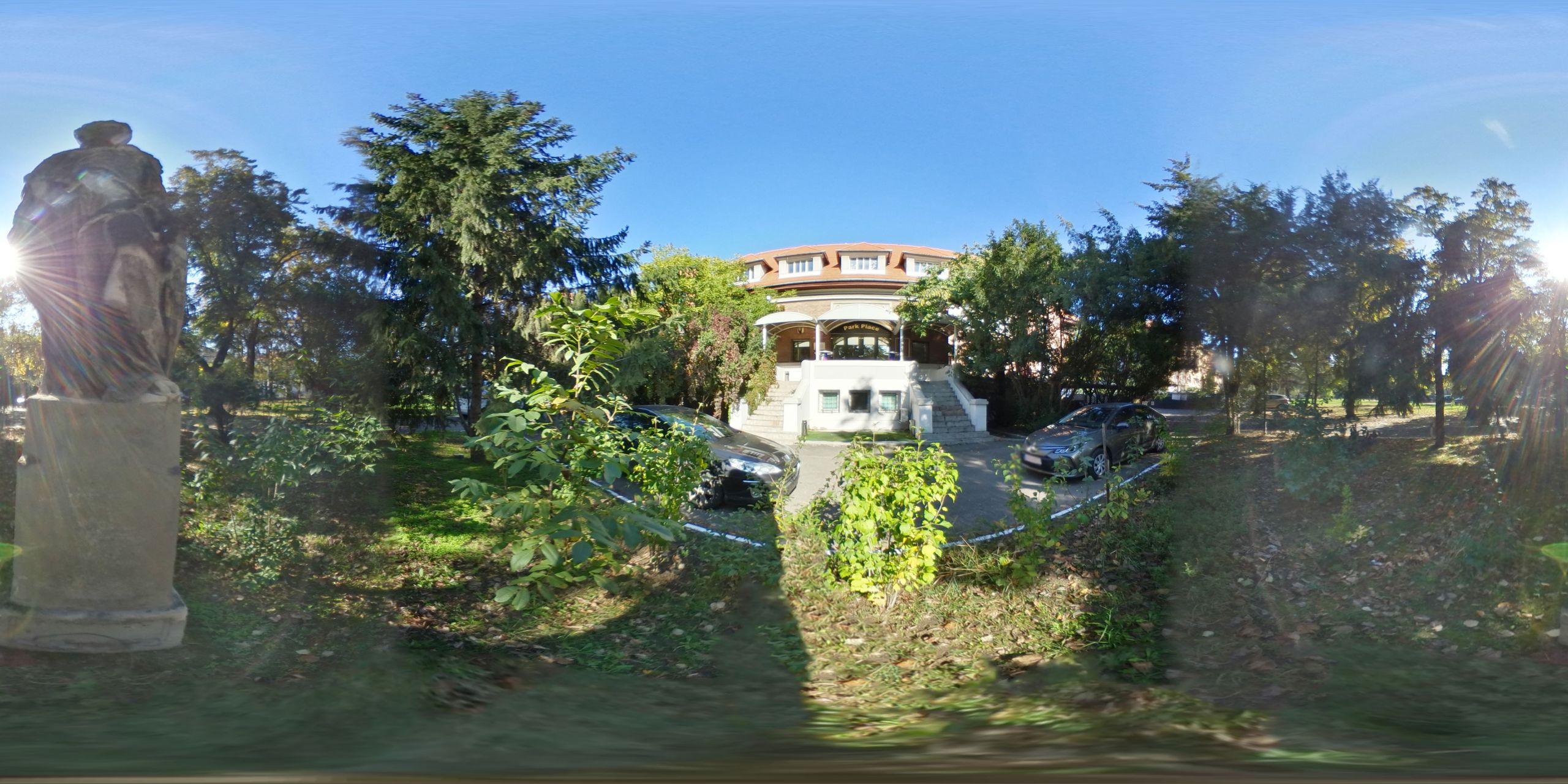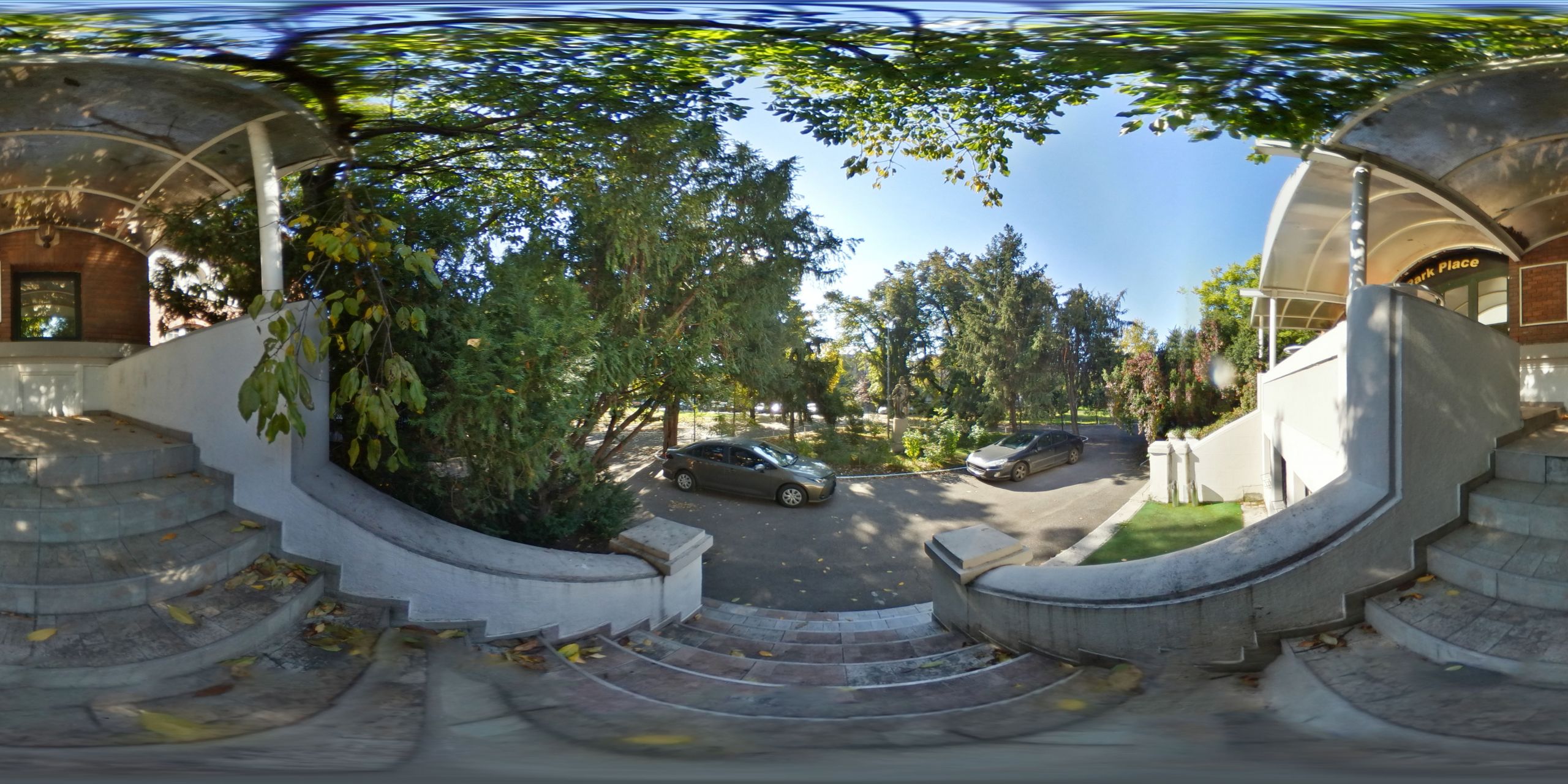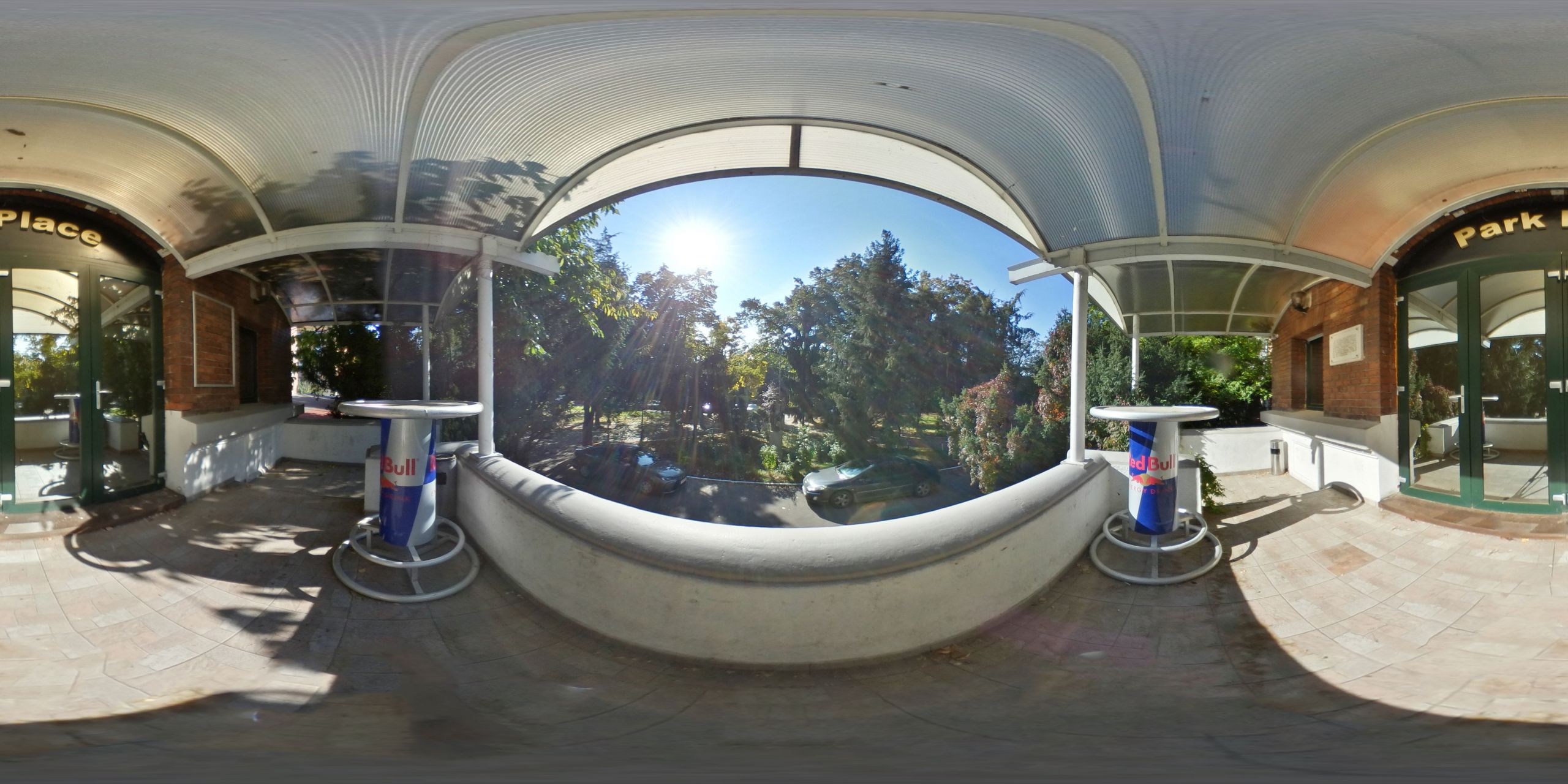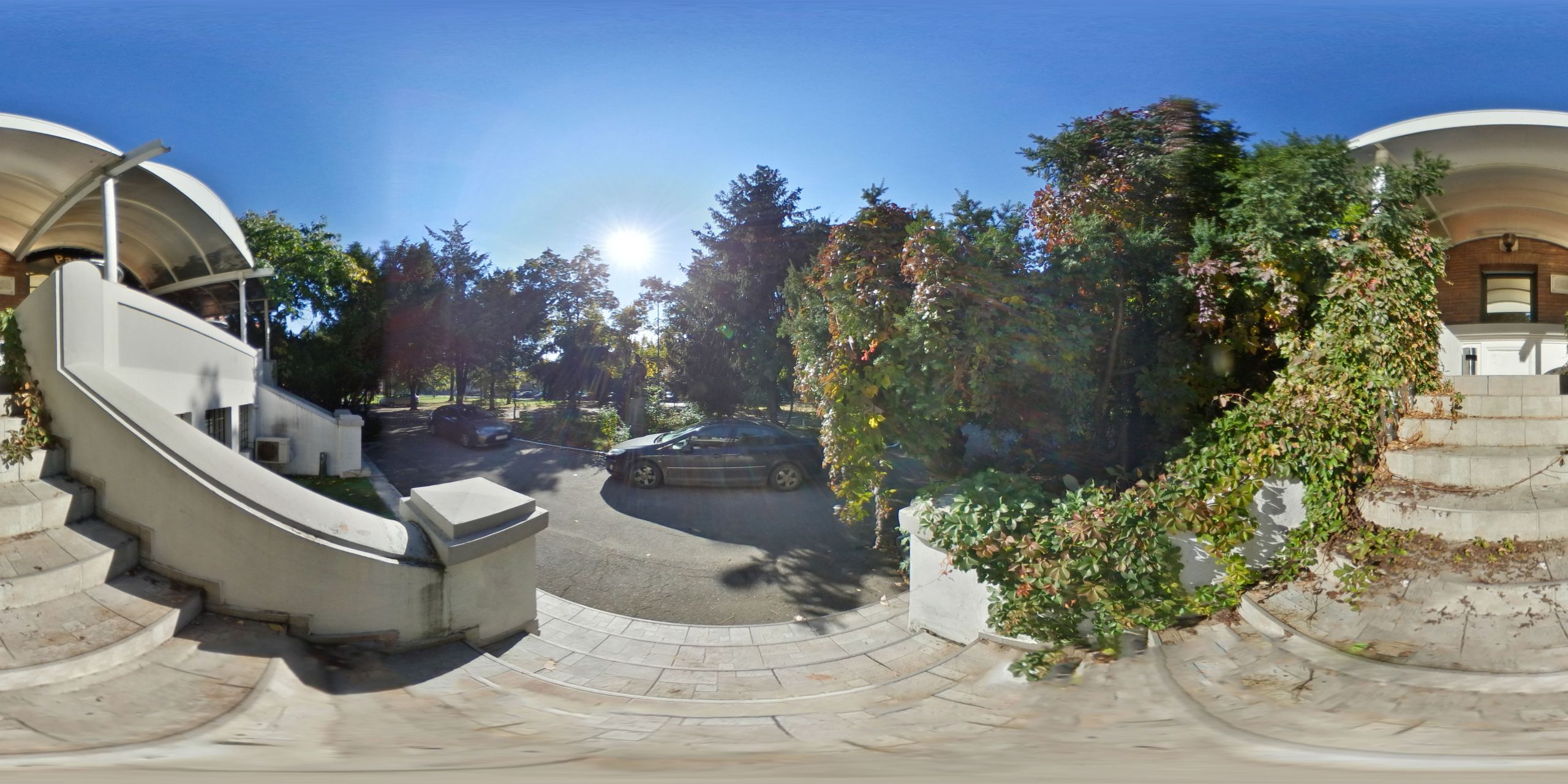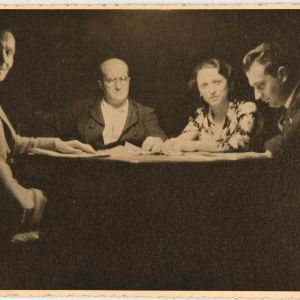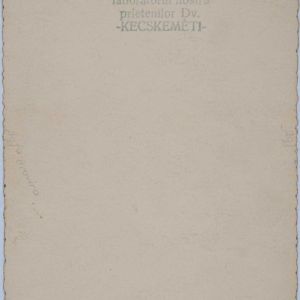Victor Babes Boulevard no. 10
The Politehnica Student Restaurant was at the epicenter of the anti-communist demonstrations of the students from Timișoara from 1956.
Listen to the audio version.
The "Politehnica School" was founded in 1920 in Timisoara. It is a fundamental moment for the evolution of the city, which acquires a new function on this occasion, that of a university center. The construction of the Politehnica Institute complex, located on Mihai Viteazul Blvd., began in 1922. A close-up is made by the architect Emil Rüster (Berlin, February 1922). The project of the current buildings will be realized by the architect Duiliu Marcu, who finds that "the works were started, the foundations finished and a part of the masonry executed". The architect is assisted by engineer Jenő Klein, "Telek Bank" entrepreneur and technician Oskar Flander.
Duiliu Marcu's initial scheme included a pavilion for the rectory, an electrical engineering pavilion, a mechanics pavilion, a social group, an administrative (director) pavilion, and one dedicated to the teaching staff. Each pavilion was arranged around an inner courtyard, the sections being simultaneously independent and interconnected. In the architect's initial proposal, the social group included 4 student dormitories with 250 beds, with shops on the ground floor and the main pavilion. The student restaurant was part of the main pavilion that contained the clubrooms for 1000 students with table tennis rooms, library, reading room, drawing and music rooms, medical office, etc.
In the end, only the mechanics' pavilion, a student dormitory, and the student restaurant building were executed, not even respecting the planting plan proposed by the author. Both the student restaurant and the other two buildings are made in neo-Romanian style with Art-Decoinfluences. The facades are made of exposed brick facing and stone-like elements.
The reverberations of the anti-communist revolution of 1956 in Hungary were felt in the same year in Timisoara. In this context, the Politehnica Student Restaurant was at the epicenter of the anti-communist demonstrations of the students from Timișoara from 1956.
Thus, on October 30, 1956, several groups of students headed to the Faculty of Mechanics. Due to the fact that the amphitheaters and corridors of the faculty proved to be too small, the location chosen for this meeting was the student restaurant of the Politehnica Institute. According to the recordings of the communist authorities of those times, more than half of the 4,287 students of the academic center in Timisoara took part in the assembly. During this meeting, several students spoke, presenting their demands to the local communist authorities. These highlighted the difficulties faced by the population and the anti-national character of the Soviet occupation regime. The claims were summarized in a Memorandum, presented on this occasion.
Measures to repress the student movement were soon to follow. During this assembly, the Security and Militia troops surrounded the area, isolating the participants in the meeting from the rest of the city. In the evening of the same day, the main organizers of the student movement were arrested, followed by raids and searches on the city's streets, which continued throughout the night. More than 800 students were arrested, 29 of them, who were considered the organizers of the events, being sentenced to a combined sentence of 79 years in prison.
The anti-communist movement of students in Timisoara remains one of the main movements of this kind from the communist period.
Bibliography
1. Ioan Munteanu, The anti-communist student demonstration in Timișoara in October 1956. National political significance in Annals of Sighet 8, 1954-1960. The ebbs and flows of Stalinism, Civic Academy Foundation, 2000.
2. Duiliu Marcu, Architecture 1912-1960, Ed. Tehnică, Bucharest, 1960
3. Mihai Opriș, Mihai Botescu, Historical Architecture in Timișoara, ed. Tempus, Timișoara, 2014
Excerpt from the interview of engineer Ioan Ciolac about the events of 1956 în Timișoara, conducted by Adrian Onica in February 2005 (Oral History Collection of the Central University Library "Eugen Todoran" from Timișoara. Coordinator Smaranda Vultur)
The moment of the student demonstrations "Timisoara - October 1956" is also recorded in the Sighet Memorial, where there is a list of all those who were imprisoned: https://www.memorialsighet.ro/heinrich-drobny-4/
The 1956 generation
(...) In 1956 Poles started massive demonstrations in the spring against the situation from their country. The movements started in Poland and were so strong that they drove Constantin Rokosovski, the Russian Marshal, back home.
The Hungarians in October started these moves. From demonstrations they got to armed revolt against Racoczi. We heard these things because during the war we were listening to the Voice of America and the BBC[1]. Later on, "Free Europe/Liberty" came out, which was a bit noisy. This big radio antenna station built in 1948 that was recently demolished was made for strategic purposes in case of war with the Serbs, for jamming and various interceptions. The Hungarians started this rising that we used to comment on in college. And they started some discussions.
From our fifth year of Mechanics, with others in the dormitory, under the impulse given by Baghiu Aurel, doubled by Teodor Stanca[2] and Caius Mutiu[3], who were colleagues of mine, some discussions started. They were also related to the lack of scholarships, the difficult situation of the peasants. These concerns reached the ears of the authorities who wanted to see and test the pulse of the population. And we woke up on a Saturday, at the end of October, when we were all taken away to some classrooms and three distinguished communist academics, who were very convinced of the rightness of the cause, came to explain to us what was happening in Hungary. At this discussion, which took place in the famous classroom 23, on the first floor of the Mechanics, Baghiu Aurel[4] got up and began to counter them, with the scholarships, with the less fortunate students, with the difficult situation of the peasants, with a series of social, not political, matters. (...) On this matter it was decided that Deputy Minister Drăgulescu, who had previously been Dean of Chemistry and was in the post of Deputy Minister, should come and have a discussion with the students. The discussion from the following Tuesday - I know that I didn’t skip the classes - got so far... It started in classroom 15, then had to be moved to the Canteen because students were coming with the dozens. Hundreds of students gathered in the canteen for this discussion with Drăgulescu, which was also attended by an activist with ministerial rank, Lupu. Apparently Verdeț was also there. They were sent to see how is the situation in Timisoara. The discussion became more and more emphatic, the students booed. I was at the back of the room, and I wanted to speak too. Luckily, every time I wanted to say something, others started louder before me and I couldn't be heard. Among other things, there was a call for Russian troops to leave the country, which was considered a crime. They gave seven years of jail to the one who said this. This meeting ended with a proposal: to go to the party with some demands. Nobody wanted to start a rising or overthrow the government, it was all going to be a motion to the party with demands from the students. When this motion was drafted, in addition to the leaders of our year, who were later all identified and were imprisoned, expelled, another one entered the discussion: Aurelian Păuna, who came from Argeș when I was in the eleventh grade. He also has a book written when he was imprisoned[5]. (...). He also studied construction. He came from Argeș, from where he probably ran away, because his parents were rich. He and Holender[6] were great organizers, to bring this motion to the party. These were the reasons why Holender was expelled afterwards. I said to Holender: "You had a chance that they expelled you, because you would have remained a lousy engineer here". I knew Holender well, he was a big druker[7] at CFR, I was at Poli and we used to be friendly with each other. Then Holender, after his expulsion, said: "I will be hired at the Opera". At first he was in the choir and then he took some roles in operas, I know he also played in "Liliacul". He played the lead role in ‘’Lilicul’’. (...). He remained attached to Timisoara. And so, he reoriented himself and ended up being appointed director of the Vienna Opera, where he did very well.
When I came out of the Mechanics room I was inspired not to go straight home. If I had gone straight home to the current Madgearu, the former Miss Bălașa, at that time it was Grivița, I would have been arrested. Because when we went out, we were surprised that there were military units on the bridge, it was full of combat formations behind the canteen. I came through the centre here, chatted with some people I knew - including Costică Jude, the former handball player and handball coach of Poli - who asked me what had happened and after that I went home. And so I escaped arrest.
The next morning when I went to school there was a soldier in front of the gate. I know that teacher Bakony was about to swallow his cigarette and kept swearing in Hungarian for not letting him into the school. The schools were closed. There were demonstrations in the morning at the girls' high school, they evacuated everyone from the town starting at night from the Mechanics' dormitory and then the doctors and the girls. They took all the students to the barracks at Becicherecul Mic, where they were subjected to a security interrogation. The sitting was on Tuesday. On Wednesday and Thursday we didn't go to school. I know that Bakony came and went in at about 12 o'clock and told them, "Go to hell with your nonsense, I have work to do."
On Friday something crucial happened in the course of events, Murgulescu, the Minister of Education, came. And the question was: "Who gave you permission to close the schools? Tomorrow all students should be in class." I know that on Saturday I went to classes. Murgulescu was informed by Drăgulescu, both were former communists. They were acquaintances of my father's, they were students in Cluj when my father was a student. They knew what the situation was and what was required and by introducing them to Dej they smoothed out the seriousness of the facts. On the other hand, the communist regime in Romania had no interest in telling: "Look, sir, there were risings in Romania too." My former colleagues received a maximum of eight years, although they were threatened with death at one point. The matter was much more serious, that it was somehow an action against the communist state. It was an action "against the social order", as they called it. When you couldn't say anything bad we challenged some things there, some basic matters, including collectivisation in the social system at that time. Later, Tocaci, my former high school classmate and others, for much smaller things, received much bigger sentences in Bucharest. I had colleagues, for example Muțiu, I met him in 1964 at the seaside, he came too, poor man, after being held for eight years. They kept him the longest because he was more resistant to the prison regime. They've all had many years. And then they were allowed to finish university, to be reinstated, as a former colleague of mine used to say: "Everything we asked for at the time was applied later". But they were considered "enemies of the people". I escaped like the eye of a needle, although if I had stayed there any longer they would have taken me away from Mechanics. That was my chance, because later on the Cadre[8] would ask you: "What did you have to do with 1956?" After I finished college, they sought a few departments to retain me as an assistant, but they weren't allowed, because there was a clear directive that all of us who were in that series were to be removed from the faculty, not to have contact with students. Later it was reversed.
Pavel Biederman interviewed by Roxana Onica, Lugoj, 2001. (Oral history collection of the Central University Library "Eugen Todoran" in Timișoara. Coordinator, selection and editing Smaranda Vultur)
What was it like to be a student in Timisoara?
The student atmosphere in '53 - '58 was exceptional, years of university devotion on the part of teachers and students because they all came to learn, to achieve something in life. The Faculty of Mechanics was an exceptional one, then recognized in Europe, even the diplomas of this faculty are recognized in France. There were exceptional professors recognized internationally, such as Professor Dr. Andronescu, Professor Alaci, Professor Ion Vlădea. Many professors of exceptional professional probity. Student life at that time in Timișoara was modest, impoverished. Most of the students ate at the faculty canteen, and the food was very poor. Activities outside the university were common sense, a cinema, a party at the student house, at the student canteen. Most of the students lived in dormitories, 90 percent, except for those who lived in Timisoara. It was a pleasant life even though there were few dormitories. There weren't even that many students back then. In '53-'58 there were 5 faculties in the Polytechnic Institute: mechanics, rolling stock, chemistry, construction, and electrical engineering.
In total there were 560 students at these faculties of the Polytechnic Institute. Of course, during the faculty period, the special event was the student movement of 1956, when there was also the Hungarian Revolution, which greatly influenced the spirit of the students in Timișoara. Because of this there were demonstrations. There were also consequences, it is known that many students were imprisoned, expelled in 1956, even colleagues of mine and friends, such as the engineer Drobny Heinrich, who served 8 years in prison for taking part in the organization of student movements and for asking questions about international relations and conditions in Romania. He was sentenced to 8 years, and after serving those 8 years, he graduated with honours. He was an outstanding student and worked in Romania until 1997. He was also vice-president of the Timis County Council after 1990.
Pia Brînzeu, Family Journal, Manuscript
Stop 12: The Polytechnics’ Cafeteria
September 20, 1994. I’m alone in the kitchen. Diligent, I’m getting ready to cook something. I have no idea what to make and I rush to Sanda Marin’s cookbook. I grab it and am shocked at how ugly it has become. It’s greasy, stained, spineless. Tattered in the twenty-five years since I have been using it…I suddenly realize that a cookbook is not just a collection of recipes, of instructions, and information about preparing and serving meals. It’s not merely the chronicle of an art whose masterpieces would otherwise be lost, although Huou, the Chinese master at Kublai Khan’s imperial court, also underlined, more than seven centuries ago, the usefulness of such a collection in passing on information about the culinary and domestic life of a society.
I forget about lunch, even though I risk leaving my children unfed. I pick up my mother’s, my grandmother’s and my great-grandmother’s cookbooks and I realize how much they are telling, beyond gastronomy, about the way of life of four generations of a family from the Banat, or Central Europe, as we like to say.
The cookbook of my great-grandmother, Aloysia Katharina Cecilia Gombocz Bayer de Rogacz, is like her name. It is a lavish book, with an Art Nouveau cover, luxuriously decorated: Süddeutsche Küche, published by Katharina Prato in 1903. The German recipes abound in ingredients: as many as fifteen eggs, half a kilo of flour or sugar. Next to the book, in her notebook, the recipes are written in German, Hungarian, and French, beautifully handwritten, and followed by poems in the three languages. My great-grandmother never cooked anything because she had servants in her household and, to her, writing a recipe was not a gastronomic exercise, but an intellectual one, whether it was the Dobosh cake, Moor im Hemd, Gateau Bretagne, Hollandaise, Sonkas pudding, Barna leves, Paprika csirke or Schinkenomlette! The silver cutlery used for serving these meals had monograms, so did the damask napkins....
Grandmother had brought with her an Austrian book of recipes, Die Österreichische Küche, written by a Viennese celebrity, Marie von Rokitansky. The 13th edition from 1923 has rather too many sauces, but it is more moderate in terms of quantities. Grandmother’s generation had already gone through the First World War and knew the meaning of penury...
Mother also had a German book, but from the thirties, with Art Deco illustrations and colourful pictures, and her recipe notebook is beautifully wrapped and organised with great discipline, in numbered meals... My mother’s biggest disappointment was when we moved our lunch meals from the dining room into the kitchen and we replaced the damask napkins with paper napkins. A world ended for her then, and in the new world ranks no longer mattered and, for the sake of convenience, we ended up having our meals where only servants used to have them...
I’m next, the fourth in line, and I’m an illustration both of what Communism meant and of the current globalizing Post-modernism when, as Malcolm Bradbury puts it, King Lear is replaced by King Kong and Macbeth by McDonald’s. My notebook looks as deplorable as Sanda Marin’s book, because I am actually involved in the production process and, since I’m always in a rush to finish everything on time, I don’t take very much care of it. The recipes from my youth are cakes with one egg or simulacra imagined by the creative minds of those who had gone through the Second World War, as well as through the penury of Ceaușescu’s times (fake fish roe spread recipe, for instance, from semolina and mayonnaise). Now I have in my pantry a supply of packaged soups for emergency situations, a lot of vegetarian recipes (which, in my mother’s opinion, were not “etwas ordentliches zum essen” because they didn’t contain any meat), Indian spices, Chinese chopsticks, a wok and many, many magazines such as Good Food, which I read with pleasure; then I put them aside and forget them on a shelf, because I still prefer to cook only what I once learnt, a long time ago, from my mother and my grandmother... Good Foodwhich I read with pleasure, put aside and then leave forgotten on a shelf, because I prefer to cook only what I learned long ago from my mother and grandmother...
About the work "1956. Revolta de la Poli", part of the "Ne/Re-seen" project, on the occasion of the launch of the website "Lumi la intersecții" (Tuesday, October 22, 17:00 at the Aula of the Central University Library "Eugen Todoran" Timisoara), which brings together qualitative research on oral history archival materials, carried out by an interdisciplinary team coordinated by conf. Dr. Smaranda Vultur (Vultur Smaranda). AR exhibition "We/See you again" augments two of the stories included in this archive through a collaboration between Cinty Ionescu, Ioana Nicoară and Makunouchi Bento.
The installation recalls the student uprising at Politehnica University Timisoara on October 30, 1956, when 4,000 students headed for the Faculty of Mechanics in the hope that they would be able to resist the ideological onslaught that threatened to bring them to their knees.
The audio fragment on which the work was built is a fragment of an interview with Ioan Ciolac (b.1935) conducted by Adrian Onică. The archival materials researched are part of the special collections of the Central University Library "Eugen Todoran" in Timisoara and represent an archive of about 400 interviews with life stories, coordinated by Prof. Dr. Smaranda Vultur within the Oral History and Cultural Anthropology Group of the Third Europe Foundation.
This archive emphasizes a local or regional memory, a generational memory, a memory of events, but also a fieldwork that allowed direct knowledge between witnesses and those who interviewed them, the exploration of family memories, the discovery or rediscovery of a past partially or totally unknown. The archive brings together audio and written testimonies, sometimes also video material, photographs, documents, books or fragments of literary texts in electronic format, bibliographies, providing a basis for documentation and information on various historical themes or events.
„Ne/Re-seen"is a project of Narative Association co-funded by the Timisoara Project Center
